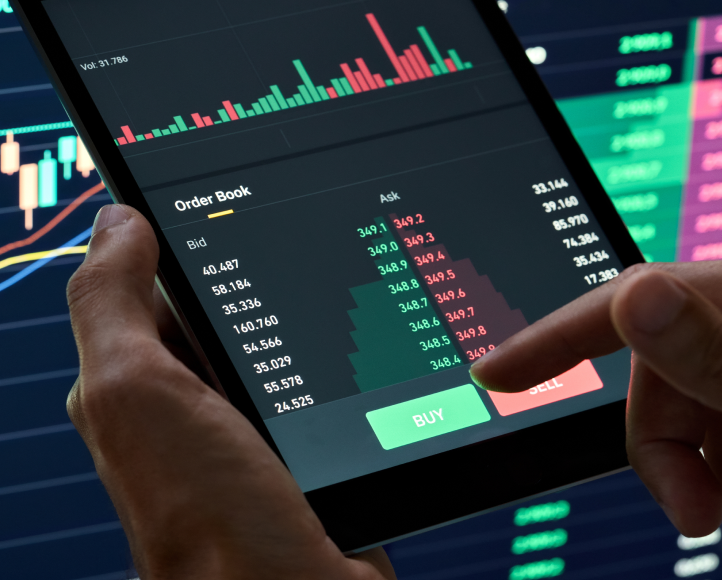Understanding Crypto Margin Trading Opportunities and Risks

Crypto Margin Trading: Unleashing Potential in the Cryptocurrency Markets
Margin trading has revolutionized the way traders engage with cryptocurrency markets, offering opportunities to amplify potential earnings whilst accepting higher risks. In this article, we will delve into the fundamentals of Crypto Margin Trading, examine its advantages and disadvantages, and provide effective strategies for traders looking to navigate this exciting landscape. For further insights on trading principles, Crypto Margin Trading click here.
What is Crypto Margin Trading?
Crypto margin trading allows traders to borrow funds to invest in cryptocurrencies beyond their current capital. By using leverage, which is typically provided by exchanges, traders can control larger positions than their account balance. For instance, with a 10x leverage, a trader can open a position worth $10,000 with only $1,000 of their own capital.
The Basics of Leverage
Leverage is expressed as a ratio, such as 2:1, 5:1, or 100:1. A ratio of 10:1 indicates that for every dollar of your own capital, you can trade with ten dollars. While this can amplify gains, it similarly magnifies losses. This necessitates an understanding of risk management principles, as poor decisions can lead to significant losses.
Advantages of Crypto Margin Trading
One of the primary advantages of margin trading is the potential for increased profits. When a trader uses leverage effectively, even minor price movements can result in substantial gains. Moreover, margin trading allows traders to diversify their portfolios by opening multiple positions across various cryptocurrencies, enhancing their potential for returns.
Additionally, margin trading may provide enhanced liquidity in the market. Traders can enter and exit positions swiftly, responding to market conditions and trends in real-time. This agility can be crucial in the highly volatile crypto space, where prices can fluctuate dramatically within a short time frame.
Risks Associated with Margin Trading
Despite the allure of margin trading, it comes with significant risks. The foremost concern is the potential for amplified losses. A small adverse movement in the market can lead to a liquidation of a trader’s position if they are unable to cover the margin. This risk can lead to losing not just the borrowed amount but also the trader’s own capital.
Another risk is the psychological impact of trading with leverage. The fear of losing money can cloud judgment, leading traders to make impulsive decisions. It’s essential for traders to maintain a disciplined approach, ensuring they stick to their strategy and do not let emotions dictate their trading actions.

How to Get Started with Crypto Margin Trading
To engage in margin trading, a trader must first select a suitable cryptocurrency exchange that offers margin trading services. Popular exchanges include Binance, Kraken, and BitMEX, each providing different maximum leverage levels, fees, and security measures.
After selecting an exchange, a trader should consider creating a solid trading plan that outlines their goals, entry and exit strategies, risk tolerance, and capital allocation. It’s crucial to start with a demo account or paper trading to gain experience without financial risk before committing real funds.
Risk Management Strategies
Effective risk management is critical in margin trading. Traders should implement stop-loss orders to limit potential losses. By setting predefined points at which they will exit a losing position, traders can protect themselves from significant drawdowns.
Position sizing is another essential aspect. Traders should never risk more than a small percentage of their total capital on a single trade, which helps to minimize the impact of potential losses. Adopting a consistent method for evaluating trade opportunities can further bolster risk management efforts.
Fundamental and Technical Analysis in Margin Trading
Successful trading requires a sound understanding of both fundamental and technical analysis. Fundamental analysis involves evaluating the underlying factors affecting the prices of cryptocurrencies, such as news events, regulatory changes, and market demand.
On the other hand, technical analysis focuses on historical price movements and trading volume to forecast future price behavior. Traders often use charts and indicators, such as moving averages and relative strength index (RSI), to make informed trading decisions.
Conclusion
Crypto margin trading offers exciting opportunities for traders willing to embrace its complexities. While the potential for higher profits is attractive, the accompanying risks necessitate a thorough understanding of the principles involved. By utilizing effective risk management strategies, conducting robust analysis, and maintaining emotional discipline, traders can enhance their chances of success in the volatile world of cryptocurrencies.
As you venture into crypto margin trading, remember to continue educating yourself and adapting to new market conditions. The cryptocurrency landscape is continually evolving, and staying informed is key to navigating its challenges and opportunities.